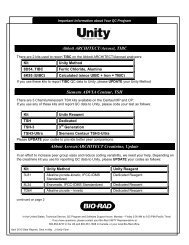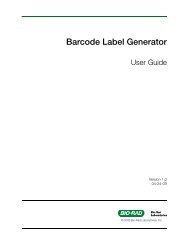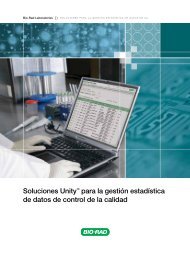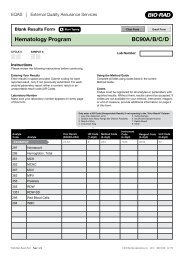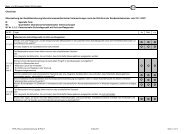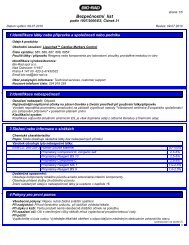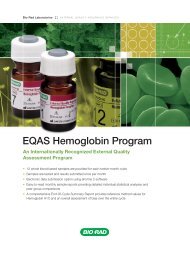EQAS Program User Guide - QCNet
EQAS Program User Guide - QCNet
EQAS Program User Guide - QCNet
You also want an ePaper? Increase the reach of your titles
YUMPU automatically turns print PDFs into web optimized ePapers that Google loves.
Chapter 7: Statistics and Algorithms Used in <strong>EQAS</strong> ReportsCalculate the non-robust standard deviation (SD) for a set of valuesSD = (x n-x) 2n - 1Where:SD = standard deviationx = non-robust mean (average) of the values(x n -x) 2= the sum of the squares of differences between individual values and the meann = the number of values in the data setCoefficient of Variation (CV)Coefficient of variation is the relative standard deviation (that is, the standard deviation expressed as apercentage of the mean). The CV is useful because it is independent of concentration.Calculate the coefficient of variation (CV)CV = (SD ÷ x) 100Where:SD = standard deviationx = mean (average) of valuesUncertainty (U)Standard uncertainty of the assigned value is estimated. It is an indicator in the confidence of the comparatormean (assigned value). Lower values, close to zero, indicate low uncertainty. Higher values indicate greateruncertainty (or reduced confidence) in the comparator results. When the assigned value is derived as a robustmean calculated using Algorithm A, the reported U represent expanded uncertainty expressed atapproximately the 95% confidence level using a coverage factor of k=2.Calculate Uncertainty (U)U = 1.25 xnkWhere: = the robust standard deviationn = the number of values in the data setk = defined coverage factor of 286 <strong>EQAS</strong> <strong>Program</strong> <strong>User</strong> <strong>Guide</strong>






